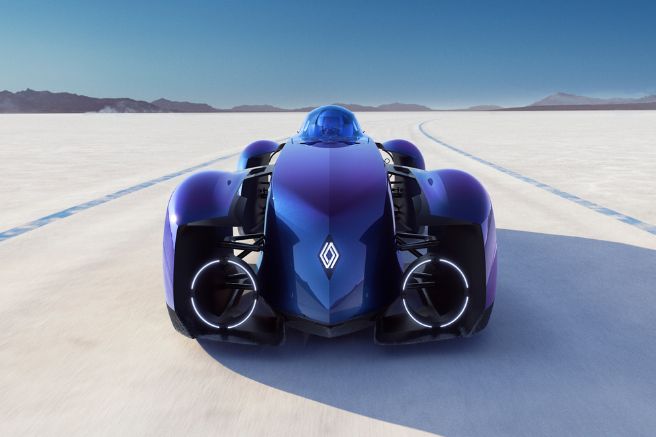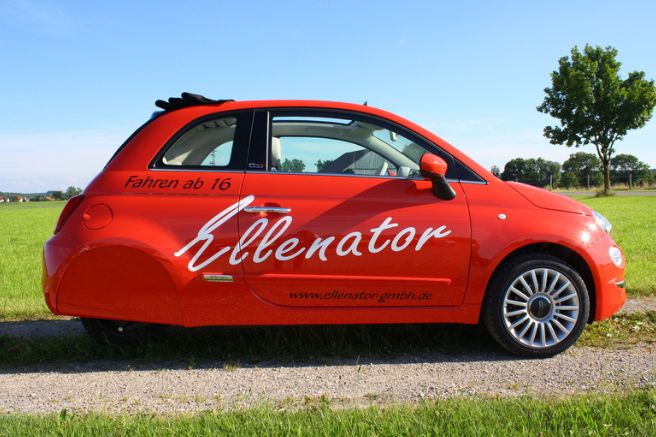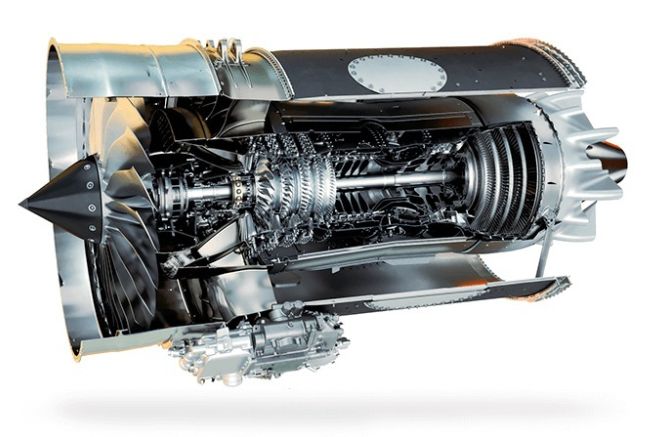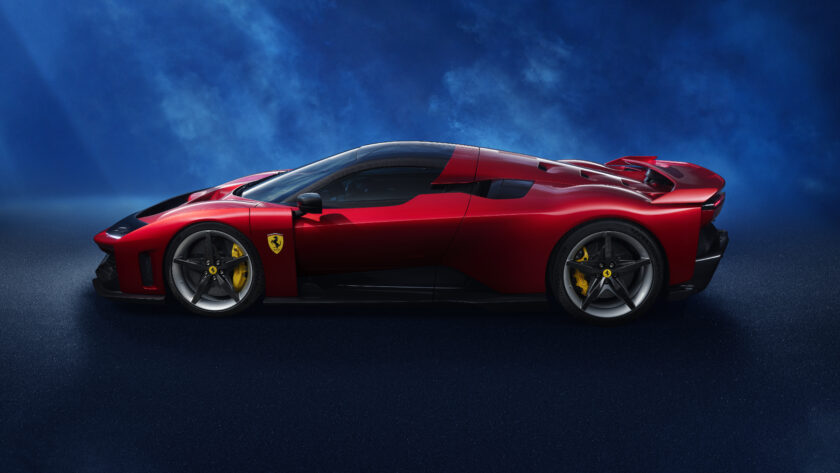
The latest supercar from Maranello showcases Ferrari’s cutting-edge technological and performance advancements. The “F80” harnesses the extensive motorsport expertise of the Prancing Horse to create a high-performance road-going hypercar equipped with a hybrid powertrain delivering an astonishing 1,200 horsepower.
A Technological Powerhouse
Directly derived from Ferrari’s experience in top-tier motorsport categories such as Formula 1 and the World Endurance Championship—where Ferrari secured back-to-back victories at the 24 Hours of Le Mans with the “499P”—the new “F80” represents the pinnacle of Maranello’s engineering prowess. This supercar combines unparalleled performance with exceptional drivability, making it suitable for both track and road use. While road-legal, the F80 remains true to its racing DNA, featuring an advanced hybrid powertrain similar to those in Formula 1 and WEC. At its heart lies a 3.0-liter twin-turbo V6 engine, designated “F163Cf,” with a 120-degree V architecture. Generating 900 horsepower, the combustion engine is paired with a hybrid system comprising three electric motors—two on the front axle and one on the rear—delivering an additional 300 horsepower for a total output of 1,200 horsepower.
Cutting-Edge Engineering
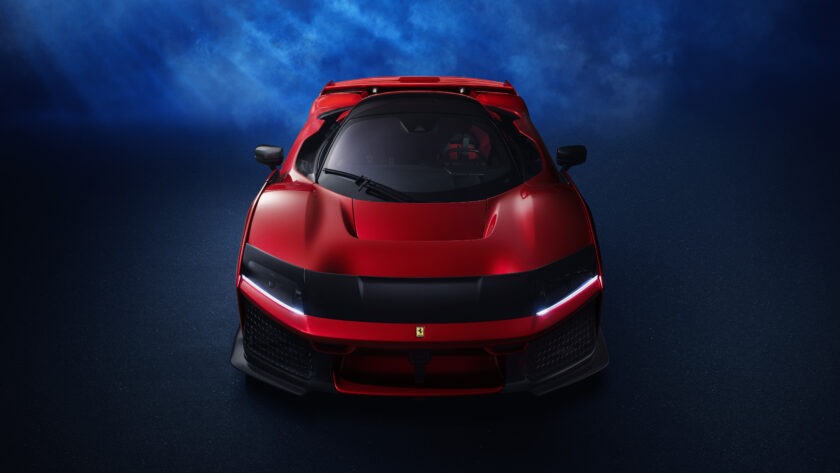
The record-breaking power figures stem from groundbreaking engineering, with many elements borrowed from the victorious Ferrari “499P” prototype. The internal combustion unit benefits from state-of-the-art architecture, optimized oil pump recovery, high-efficiency injectors, and reinforced bearings. Furthermore, the F80 integrates MGU-K and MGU-H systems—technologies derived from Formula 1. The MGU-K functions as a high-performance electric motor, while the MGU-H recovers excess kinetic energy from the turbochargers via an electric turbo positioned between the turbines and the compressor.
Exclusive enhancements to the “F163Cf” include advanced engine calibration, new ignition and injection phases, and an industry-first statistical detonation control system. This technology allows the engine to operate at 20% higher combustion chamber pressures than previous Ferrari units, significantly improving efficiency and power output. Titanium connecting rods, featuring a precision-matched dented interface, ensure perfect centering and superior bearing alignment, while lightweight aluminum pistons have been redesigned to withstand higher pressure and thermal loads. Additionally, the ultra-resistant steel pin is coated with “DLC” (diamond-like carbon) treatment, and a dedicated lubrication hole optimizes oil flow, enhancing durability and performance.
The F80’s engine is positioned as low as possible within the chassis, with a minimal 100mm clearance between the crankshaft axis and the car’s underfloor components. This is achieved through the use of a compact flywheel featuring a dual-layer spring configuration, which reduces system rigidity and filters vibrations before they reach the transmission. These innovations contribute to a lower center of gravity, supporting the first-ever electric powertrain fully developed in Maranello.
Next-Generation Electric Powertrain
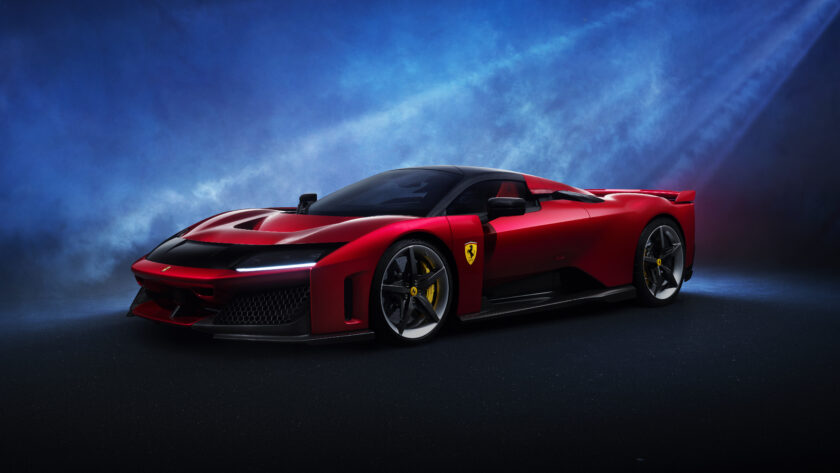
Ferrari engineers have leveraged their Formula 1 expertise to optimize the electric powertrain, incorporating cutting-edge technologies such as stator coil-tooth winding, a Halbach array rotor configuration, and carbon-fiber magnet retention. The latter enables the electric motors to reach an astounding 30,000 rpm, while the Halbach array maximizes magnetic flux density without increasing weight or inertia. The stator’s Litz wire winding minimizes electrical losses by ensuring uniform current distribution, enhancing overall efficiency.
Aerodynamics: Performance-Driven Design
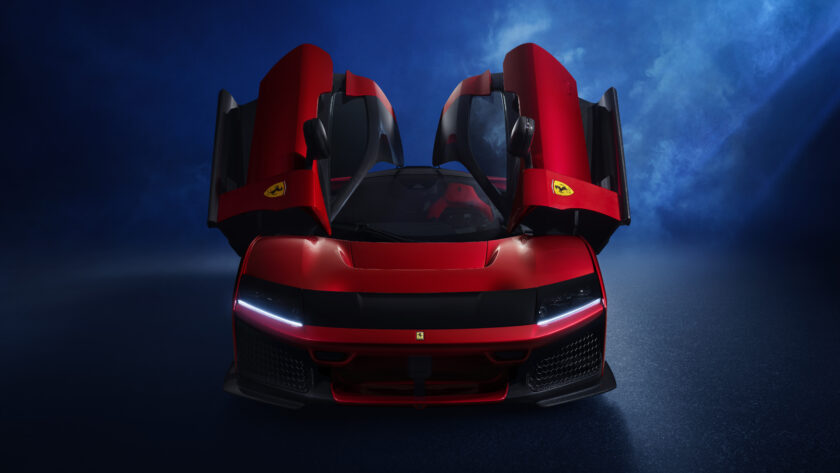
The F80’s active aerodynamics enhance downforce and efficiency. A mobile rear wing, rear diffuser, triplane layout, and front S-Duct collectively generate an impressive 1,050 kg of downforce at 250 km/h. The car’s angular, sculpted design mirrors the look of a streamlined Formula 1 car, with vertically-oriented side panels integrating seamlessly with the upper body. The cockpit is designed as a tapered, driver-focused monocoque, reinforcing the single-seater experience. Ferrari refers to this layout as “1+”, emphasizing the optimal driving experience in a solo configuration. While homologated for two passengers, the offset seating positions and differentiated materials underline its driver-centric ethos.
Ferrari F80, adaptive Evolution
The rear wing plays a pivotal role in the F80’s adaptive aerodynamics. Continuously adjusted in real-time based on acceleration, speed, and steering input, the wing finds the optimal balance between downforce, stability, and drag reduction. In “High Downforce” mode, utilized during braking and cornering, the wing adjusts to an 11-degree angle, generating over 180 kg of downforce at 250 km/h. In “Low Drag” mode, the leading edge tilts upward, minimizing aerodynamic resistance to enhance straight-line speed.
Next-Level Braking Technology
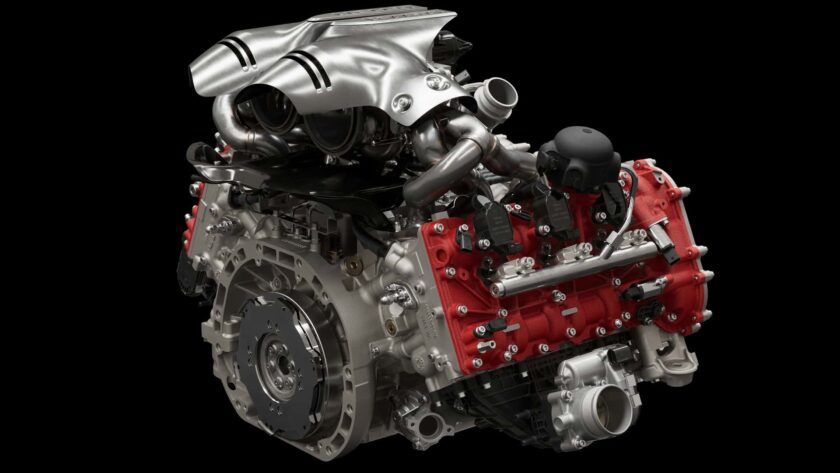
The Ferrari F80 debuts the revolutionary “CCM-R Plus” braking system, co-developed with Brembo. Unlike traditional carbon-ceramic brakes, this system utilizes long carbon fibers, improving resistance and thermal conductivity by 100% and 300%, respectively. The braking surfaces feature a silicon carbide coating for enhanced durability and reduced bedding time. Additionally, custom brake pad compounds ensure a consistent friction coefficient even under extreme track conditions. The dual-row ventilation channels in the discs optimize cooling, enhancing heat dissipation and performance longevity.
Title: Ferrari F80, a concentration of technology
Translation with ChatGPT

